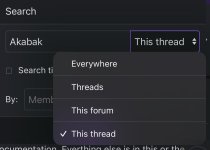As I have just explained, this is not generally correct, any especially not correct for asymmetric devices.Because the vertical data occupies the same portion of a sphere as the horizontal does, it is given the same weighting in CTA2034.
Regarding the perception, the horizontal may dominate imaging, but certainly not the spectral balance - vertical response can color the sound the same way as the horizontal. It's always the total radiated power that should be considered in a small room regarding the effect on a subjective spectral balance.In perception terms the horizontal response dominates but that is not taken into account.
BTW, I have many times wondered that even the tall ribbon tweeters (which are a disaster regarding the radiated high-frequency power because of the strong vertical beaming) do come out surprisingly well in the CEA/CTA2034 reports. It it just because of what I mentioned above - the total power and the DI calculated from the H/V orbits is not accurate at all in that case. They just can't be given the same weight for sources like that.
I was pointing out how it is weighted in the standard, I did not say that the standard produced an accurate result in this regard.As I have just explained, this is not generally correct, any especially not correct for asymmetric devices.
I didn't say anything to contradict that either, just that the standard is not perceptually weighted.Regarding the perception, the horizontal may dominate imaging, but certainly not the spectral balance - vertical response can color the sound the same way as the horizontal. It's always the total radiated power that should be considered in a small room regarding the effect on a subjective spectral balance.
You said that "the vertical data occupies the same portion of a sphere", and that's not correct.
The vertical data captured by measuring in dual planes. What you are saying and I am saying is not in opposition.
When all you have are the H and V (0° and 90° inclination) orbits, the best what you can do is a mere average, giving them both the same weight.
OK, but then it should be said that they are assumed to occupy the same area. Not that they do.
It definately would't hurt measuring more orbits 🙂
If one is to measure the whole thing with 10 degree resolution - that's 1296 measurements.
Surely one can measure just 1/4 of it for most symmetric horns.
If one is to measure the whole thing with 10 degree resolution - that's 1296 measurements.
Surely one can measure just 1/4 of it for most symmetric horns.
Yes, but how about a complete speaker box with a woofer, not only a sole horn? Then full sphere with numerous measuring points seems to be a must. Leads to Klippel NFS, right?
I said round. But even if "HEX'd", the difference is very small.If they are not HEX'd 😉
//
Yes, but how about a complete speaker box with a woofer, not only a sole horn? Then full sphere with numerous measuring points seems to be a must. Leads to Klippel NFS, right?
Indeed. Then it would be interesting to know if the Klippel NFS virtually reduces the measuring cloud to two hemispheres, horizontal and vertical, to comply with ANSI/CTA-2034-A, or if the full information is retained.
@bikinpunk, could you help us? If you had the time to quickly read the previous two pages, from #14.161 where the problem was formulated (issue with spinorama measurements when drivers radiate asymmetrical), and inform us about the Klippel way of calculating, this would be super helpful. And maybe even interesting for you.
This also means an alternative calculation would be possible with the data that Amir and Erin have gathered. If I remember correctly, Amir, in a discussion if phase could be included in his published data, said the source dataset of a measurement is about 2 GB.
But the difficulty would be to establish the calculation itself, as well as the actual work with the data.
But the difficulty would be to establish the calculation itself, as well as the actual work with the data.
I doubt that the NFS doesn't have this feature, independently of the standard. As it can calculate these things a lot more accurately (I assume), it would be a huge waste if it didn't.
Last edited:
Good morning everyone.Sure. I don't plan to do that, I was only curious.
- ST260 kit. Anyone willing to try the concept?
STL files: https://at-horns.eu/ext/ST260-kit-v1.zip
Attachments are no longer available.
Does anyone have these stl files to share?
They would be very useful.
Thank you
Hi everyone, I'm a new ATH user.
I don't understand if i can generate horn profiles like the Hypex family, tractrix etc.
If it is possible, do you have any examples?
Thanks
I don't understand if i can generate horn profiles like the Hypex family, tractrix etc.
If it is possible, do you have any examples?
Thanks
You should take a quick look at the provided documentation. Everthing else is in this or the practicalities thread. It does require quite some effort to get a working setup for further optimizations of your ideas.
I do have problem getting ath output to work with akabak for example, but there seems to be a solution in here somewhere. If anybody knows where to point me, i would be delighted. Maybe it could be part of the first post with general directions?
I do have problem getting ath output to work with akabak for example, but there seems to be a solution in here somewhere. If anybody knows where to point me, i would be delighted. Maybe it could be part of the first post with general directions?
- Home
- Loudspeakers
- Multi-Way
- Acoustic Horn Design – The Easy Way (Ath4)
